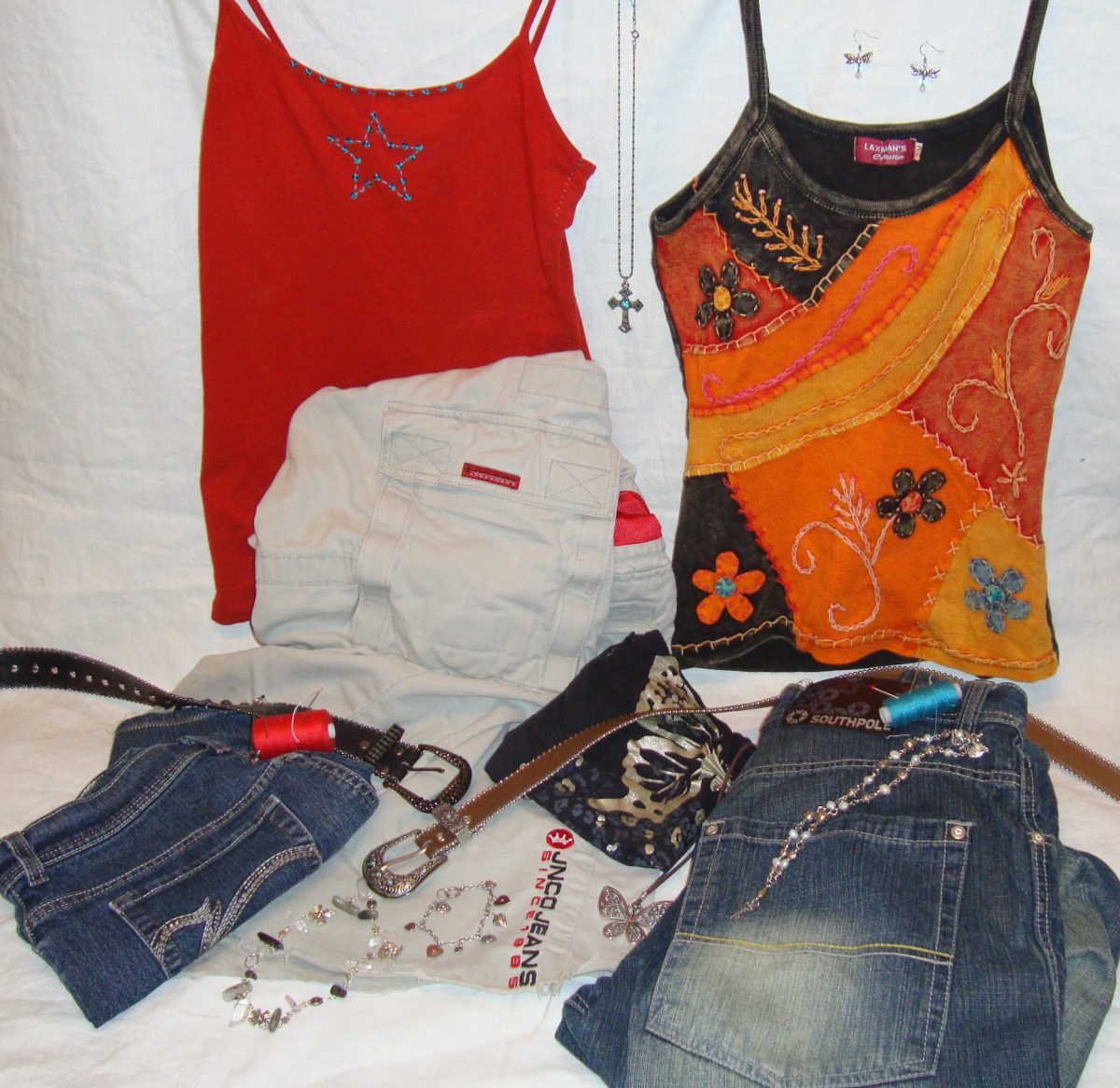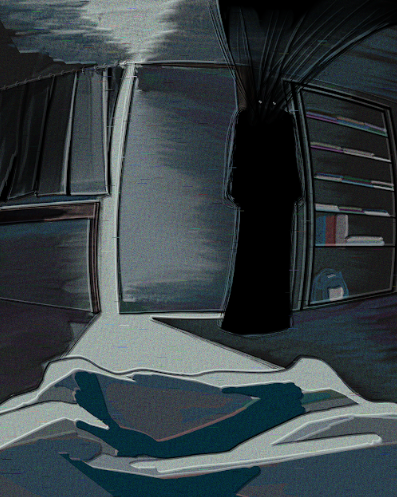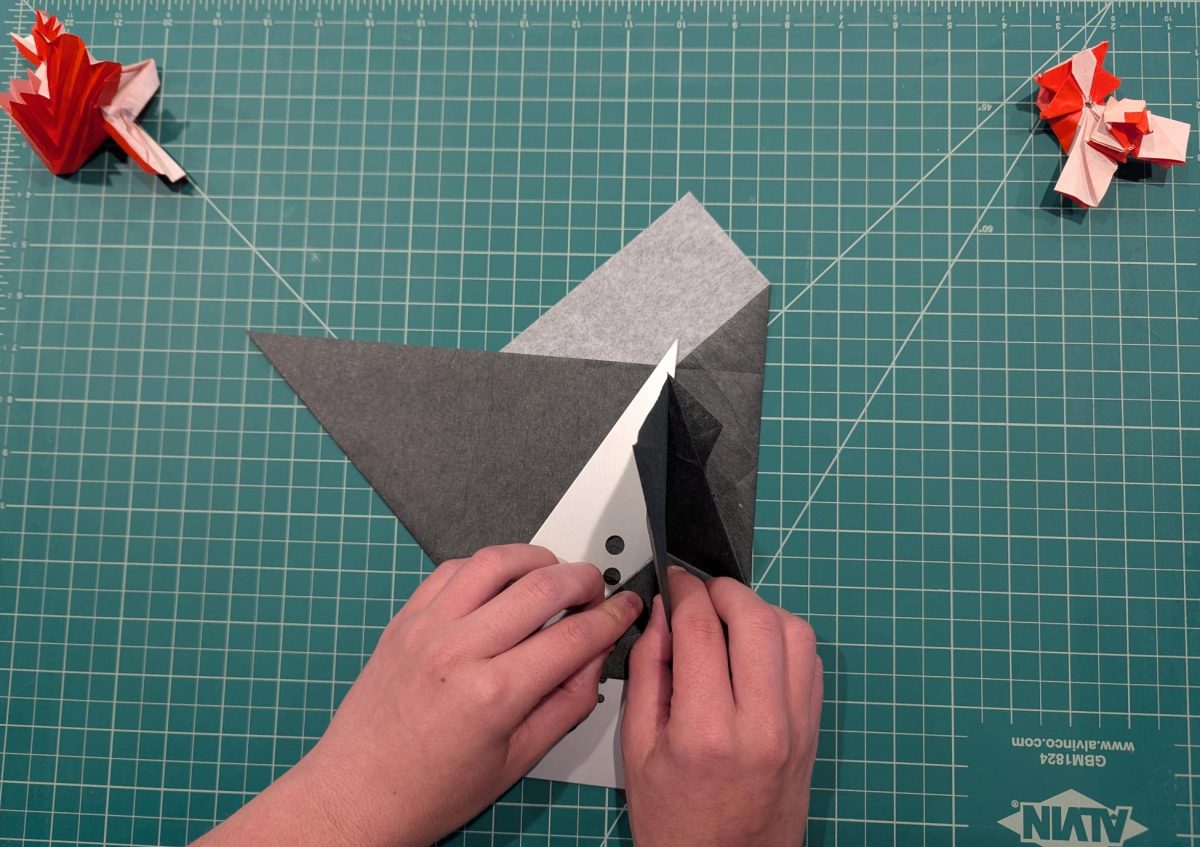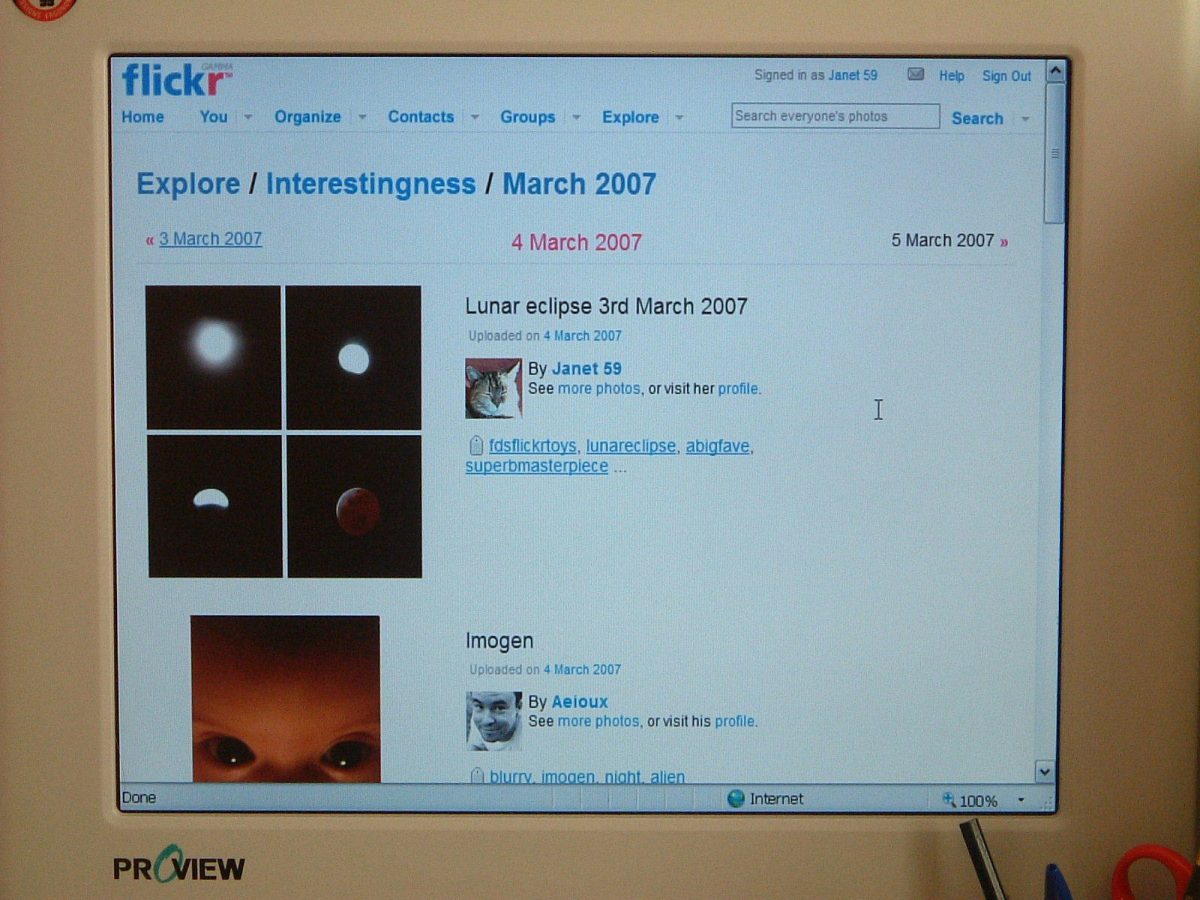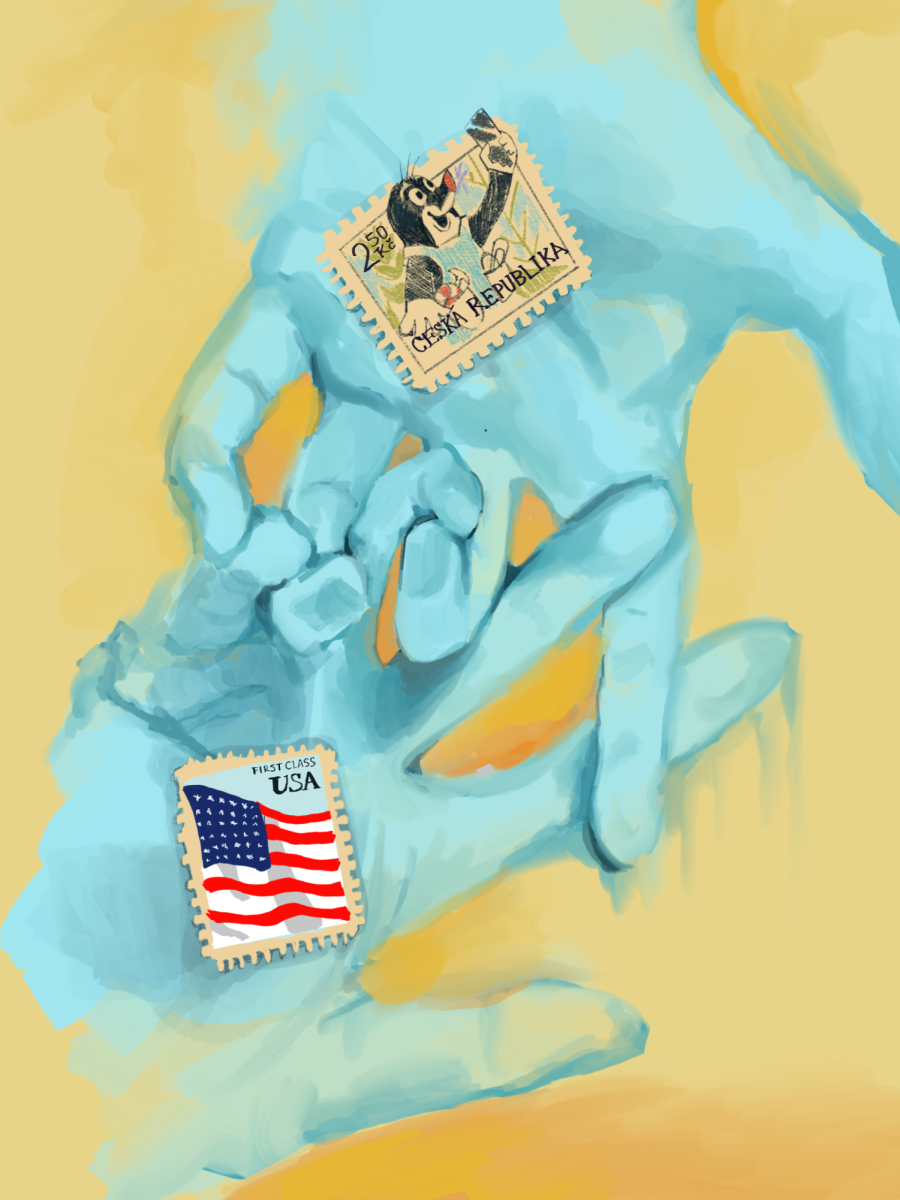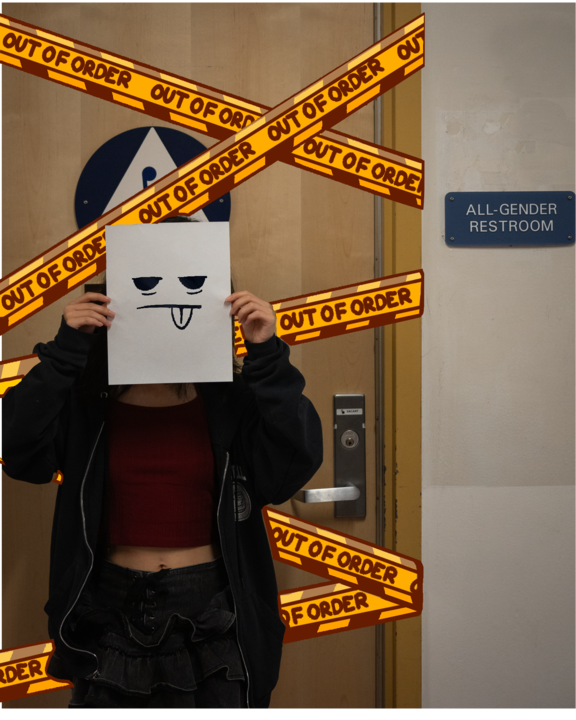Two years ago I was a freshman walking into Lowell High School, wearing my brother’s ill-fitting Children’s Place jeans and a disintegrating Angry Birds T-shirt. I was anxious to fit in and have my peers approve of what I wore. It was an awkward outfit choice, and I struggled with being comfortable in what I wore, as well as expressing my femininity. Freshman year was a pivotal time for me, style wise. I had just escaped the harsh confines of my Catholic K-8 school uniform, and was thrust into the liberal freedom of Lowell High School’s non-existent dress code. While a full vintage Children’s Place outfit—a children’s clothing store known for its cheesy, but popular, graphic T-shirts—may seem like a bold choice already, it would take a lot more for me to be comfortable in my skin, and confident in my clothing style. Through the exploration of my style, I learned to express myself through my clothing instead of tailoring it to appeal to others, and become more comfortable in my femininity.
In elementary and middle school, I was required to wear the same gendered school uniform every day: a white collared shirt, a plaid skirt, and a sweater. Meanwhile, the boys wore corduroy pants and polo shirts. I feel that my school’s uniform policy was inherently sexist, making every female student wear stereotypically feminine clothing like skirts and blouses instead of allowing them to wear more “boyish clothing” like pants. Growing up with this standard caused my view of what girls should wear to become very limited. I associated femininity with the uncomfortable mold of skirts and blouses I was exposed to during my childhood. I could not choose my own outfits or express my identity through fashion, causing me to resent my uniform and the feminine standard it thrust upon me. I decided that I hated skirts, the color pink, and anything stereotypically feminine. I didn’t realize this at the time, but my school’s dress code was having an effect on my sense of self.
Growing up with a uniform created a lack of individualism in my classmates and I. Even on non uniform days, we all wore the same clothes, competing to see who had the best Brandy Melville shirt and Lululemon leggings. I can’t speak for my former classmates, but I don’t think that most of us even enjoyed wearing these clothes. We were just trying to fit in. We all wanted to conform to a singular look that was deemed “cool” and socially acceptable in our small bubble of a school. It became a competition to see who could go without repeating the same shirt during the school year, and whose parents could buy the most expensive outerwear for “free dress days.” We were just gullible children trying to fit in and avoid bullying by falling into the traps of consumerism and mainstream fashion. Everyone seemed to need the newest, trendiest clothes, and no one actually developed a personal style. I felt that I couldn’t experiment with clothing or wear anything outside of the norm set by my school because I was afraid of standing out and getting bullied. So, even on non-uniform days, everyone still presented themselves in a uniform way. It was unacceptable to be different, and I never truly felt like I fit in.
Because of this forced conformity, my relationship with clothing and femininity became tense and uncomfortable. I began to associate makeup, skirts, and done-up hair with frivolity and stupidity, rather than something I could choose to voluntarily partake in. Towards the end of my time at my K-8, I fought back with baggy T-shirts and skinny jeans, trying to escape this girly image that was forced upon me. I viewed this clothing as a form of rebellion against the standard of bland femininity my school glorified. While my awkward outfits of T-shirts and skinny jeans were vastly different from my uniform, I never gained satisfaction from what I wore. By trying to make my clothing choices a statement to others, they lost whatever meaning and enjoyment they could have provided me. I prioritized challenging stereotypes and proving myself to others through what I wore, causing fashion to become a coping mechanism instead of a hobby. I used my self expression through fashion as a way to establish my hatred towards stereotypical girly clothing.
Coming to Lowell, where I could wear whatever I wanted, was eye-opening. It was overwhelming trying to pick an outfit each day. For most of my life, I had relied on having a preconstructed school outfit, and my sense of style was undeveloped and uncomfortable. I was suddenly faced with the challenge I had been avoiding throughout my nine years at Catholic school: finding out what I actually enjoyed wearing. This somehow felt different then my skinny jeans arc, as I didnt feel feel the need to rebel, I was just interested in developing a personal style and enjoying fashion as a hobby. Additionally, the fashion of the students at Lowell was very different from what I was used to, and my perception of style was influenced once again by the people around me. However, this time, I had a vast array of influences to choose from. Lowell is very diverse, and different groups of students sport a variety of styles. I began to seek inspiration from those around me. I developed a passion for unique clothing, mixing masculine and feminine silhouettes and combining classic and street styles. This was something I had never done before, and I found myself breaking away from the standard that my past school had set. I was wearing things that were questionable, odd, and even ugly, in other people’s opinions.
Slowly, something began to change. I stopped feeling the need to please the people around me through what I wore, and didn’t let the urge to appeal to other people’s opinions influence how I chose to present myself. I allowed myself to choose to wear things I enjoyed, rather than the things that other people around me would approve of. I slowly learned to express my creativity and individualism through my clothing. If I wanted to wear inherently feminine outfits, I could, but I no longer did it to conform to a restrictive standard of femininity. I found myself gravitating towards mens’ jeans, thrifted tank tops, and chunky jewelry, mixing and matching elements from the clothing styles of both genders.
In a society that is heavily focused on appearance and pushes femininity on girls from an early age, challenging gender norms is something that I enjoy. It is a societal standard for women to be inherently feminine, pretty, and polished. Oversized clothing pieces and mismatched accessories are the opposite of that standard. It’s exciting to experiment with fashion and mix feminine and masculine silhouettes, challenging these norms. Additionally, my newfound love for fashion allowed me to express my creativity in forms that I could wear everyday. I began sewing and modifying my clothes and creating jewelry from scratch.
Through experimenting with fashion, I have become much more confident in the way I present myself. I have been able to develop a unique style, consisting of pieces I made myself and combining a range of masculine and feminine fashion influences. Though my self-expression is constantly changing and evolving, I no longer rely on the validation of others to enjoy what I wear. Additionally, I have found myself more comfortable in my female identity, knowing that I do not have to be stereotypically feminine to express myself the way I want to. Through developing a personal style and expressing myself through fashion, I have become more comfortable with my personal identity and femininity.


